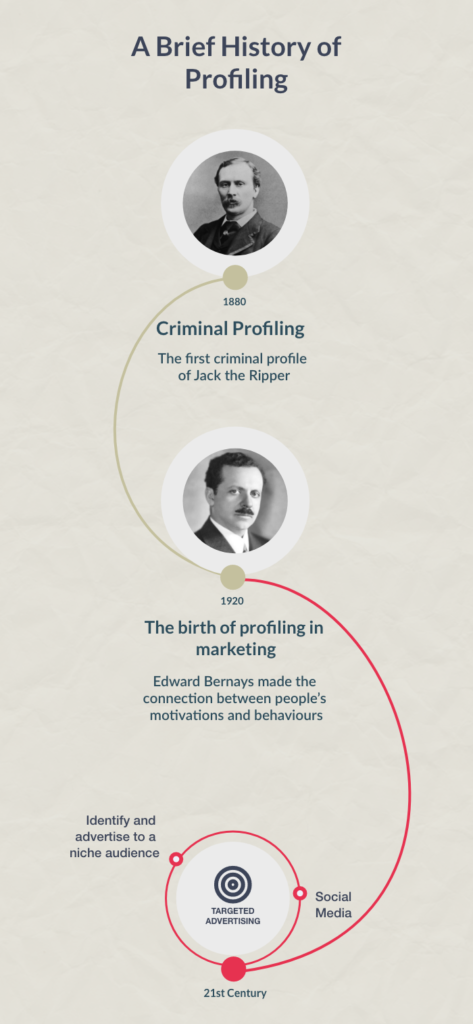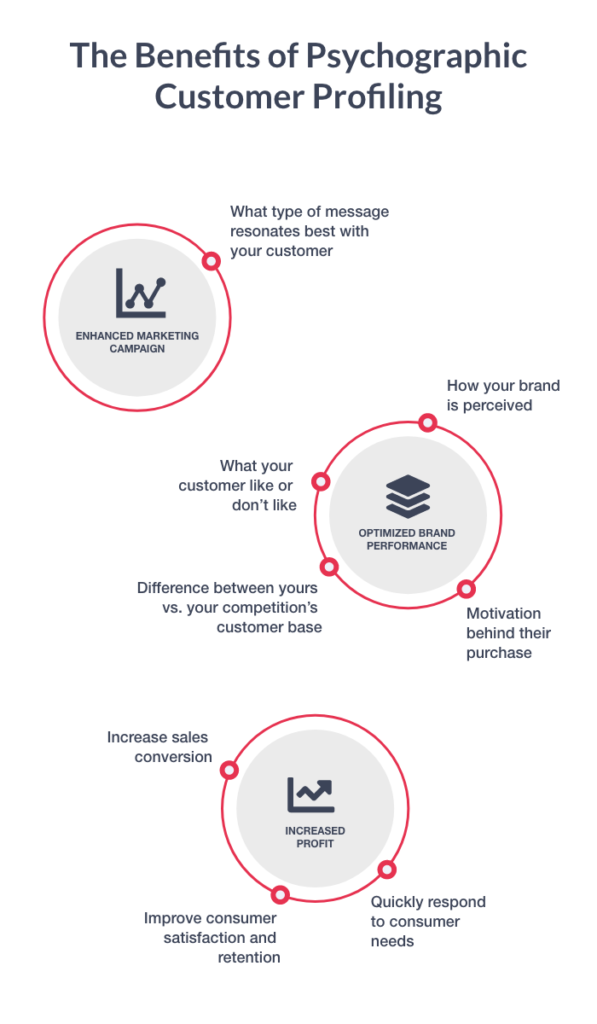What makes your customers and clients tick? What motivates them to make a purchase? What do they value? Conversely, what deters them from finalizing a purchase? Are your marketing efforts actually doing more harm than good? These are the burning questions of every business owner, and they are the questions that customer profiling attempts to answer.
What Is Customer Profiling?
The basic principle of profiling revolves around identifying and understanding the mindsets of individuals. Thus, customer profiling refers to gaining insights regarding the actions and motivations of consumers.
A Brief History of Profiling

Criminal profiling
If you’ve happened upon any of the many macabre murder podcasts and Netflix series that have gained traction over the past few years, then you’ll most certainly have encountered “criminal profiling” or “offender profiling”.
In the 1880s the Metropolitan Police assembled the first ever criminal profile to try and identify the personality of Jack the Ripper. Since then, criminal profiling has been used as an investigative tool to identify and understand the mindset and actions of criminals or potential criminals in order to presuppose and intercept future crimes. This was the first practical application of profiling.
The birth of profiling in marketing
Perhaps the first use of psychological profiling in marketing dates back to the 1920s when Edward Bernays – considered the founder of public relations, and the nephew of Sigmund Freud – made the connection that people’s behaviors could be shaped by understanding their motivations. As Bernay’s once said, “If we understand the mechanism and motives of the group mind, is it not possible to control and regiment the masses according to our will without their knowing about it?”
Bernays’ cynical view of humanity isn’t exactly one we subscribe to at Symanto. For one, people aren’t a homogenous glob. But this attitude pervaded marketing in the 20th century, and over the following decades marketing and advertising continued to paint society with a broad brush.
Targeted advertising
The rest of the 20th century saw the rise and fall of numerous subcultures, the emancipation of women, and countless other cultural revolutions that shaped how products were marketed to consumers.
As markets became more competitive, it became increasingly important for businesses to identify a niche audience and advertise specifically to them.
Then came the internet. Then came social media.
The market has never been more competitive, it’s never been easier to find and communicate with your niche audience. Thanks to emerging technologies, we’re able to create intricate and in-depth customer profiles, and tap into consumer psychology like never before.
The Importance of Customer Profiling in 2021
The growth of social media has transformed how brands and their customers interact. It’s no longer a one way street. More than ever, customers connect and engage with brands, and that connection informs their purchasing decisions.
Treating your customers generically just won’t cut it in this new era of brand engagement.
You need to understand your audience, and tailor your messaging to acquire, engage and retain your customers.
Current Methods of Customer Profiling
Companies are already utilizing data analytics to gain information about the behavior of their consumers. For example, where do they shop? Which pages do they visit? What did they buy? Etc.
Although this provides companies with the ability to predict what their consumers might do based on their actions as well as that of others, it still falls short in delivering full comprehension and holistic view of the consumer.
Furthermore, ads generated from this method run the risk of being perceived as annoying by consumers as they mostly fail to address the direct needs of the consumer nor contain a message that resonates with them. This in turn, fosters the need of ad blockers and various means to avoid ads. This is because the ads, most of time, do not speak directly to the consumer’s needs.
The Benefits of Psychographic Customer Profiling

Companies need to go further to understand who their consumers are and the reasons behind their actions (why). This combination of the WHO and WHY generates a deeper understanding of the consumer base and the best way to target them. Companies need only utilize psychological modules on the already available big data that they possess (emails, survey data, social media data, all CRM data and so on).
For instance, psycholinguistic customer profiling analyzes the way people write, what words they use and how they express themselves to reveal their mindsets and personality traits.
By combining this with emotional and motivational modules and using it on all available text data, the company can decipher the underlying mindsets, emotions as well as motivations behind the consumer’s actions. Basically, getting to know one’s own consumers and having a deeper understanding of them.
The benefits of psychographic customer profiling include:
Enhanced marketing campaign
Understand what type of message resonates best with the consumer and the best way to target them. This in turn fosters consumer acquisition, engagement and retention. The hat trick.
Optimized brand performance
Discover what consumers like or don’t like about your product or brand, the motivation that drove the consumer to purchase the product, how your customer base differs from that of your competition, and how your brand is perceived by the consumers in the market.
Increased profit
Convert the insights gained to increase sales conversion, reduce direct marketing costs, and increase marketing ROI.
Increased operational efficiency
Detect consumer complaints to predict and prevent escalation of issues as well as a quick response to consumer needs for improved consumer satisfaction and retention.
Get Started with Symanto
At Symanto, we implement state of the art AI technology in our tools to give you an in depth understanding of who your customers truly are and what motivates their decisions.
Get started today and request a free personalized demo of our insights platform or get in touch with us.
Use our tools to enhance your social listening and apply your findings to create accurate customer profiles that will in turn improve the effectiveness of your messaging and customer support.

